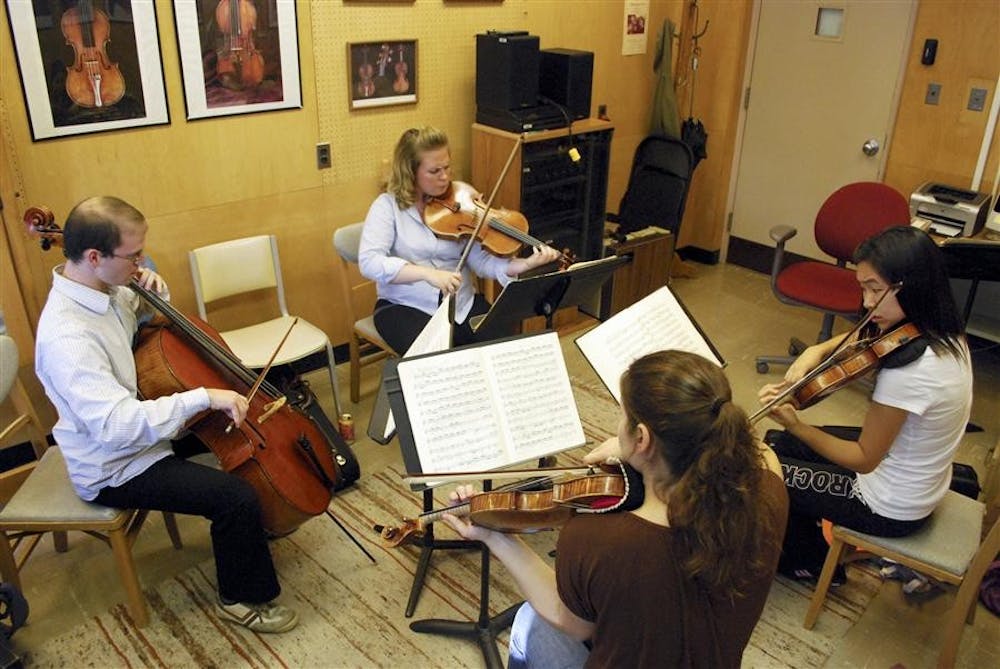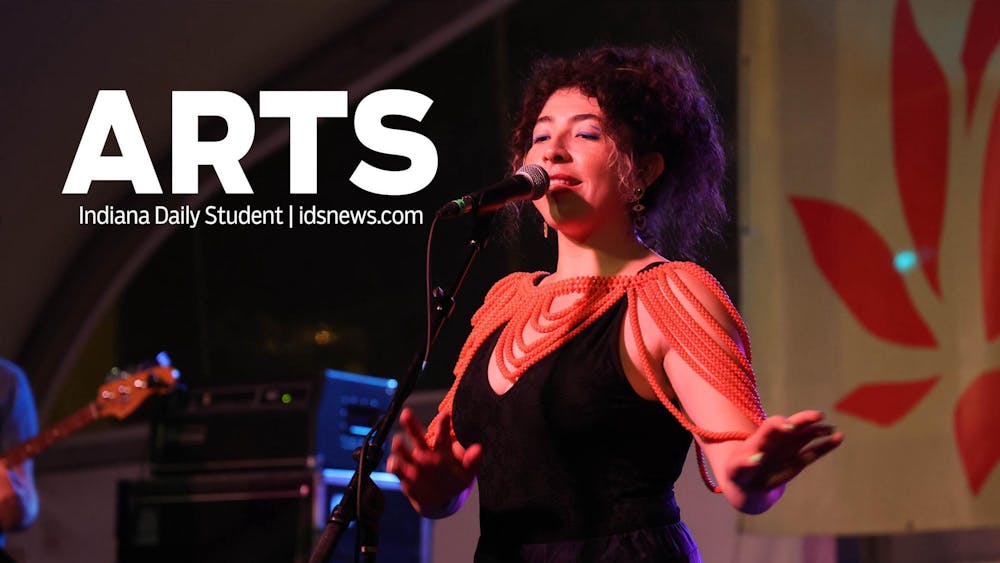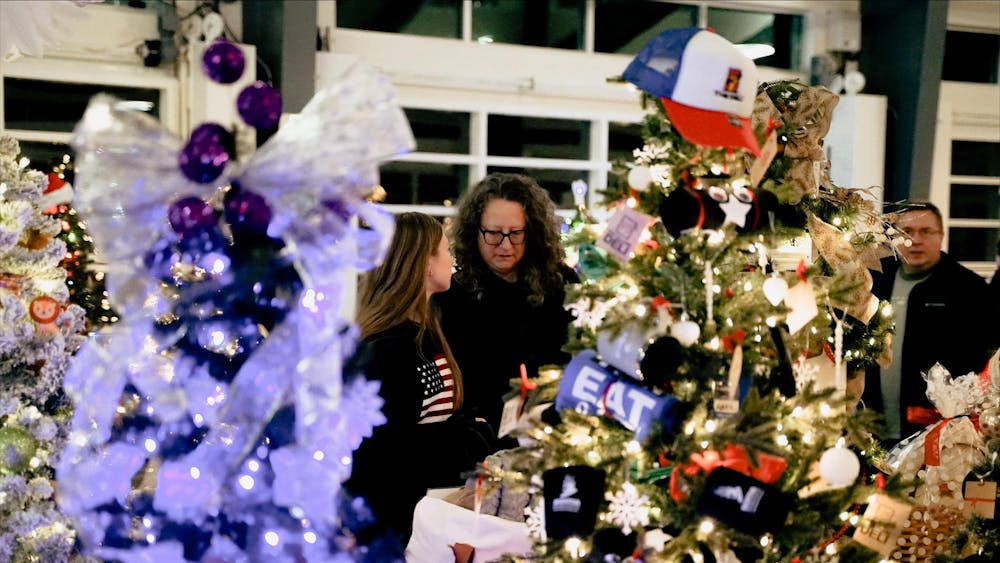On any given weekday, four musicians gather together at a small studio space in the IU Jacobs School of Music.
Around the endless circular maze of the Music Annex, music pours out from every studio space, hallway and classroom. The sounds individually sing the praises of the instruments, while collectively creating a chaotic palate for the ears within the 88-year-old music school.
On the first floor, past the long hallway of instrument storage lockers, there is a solemn-looking wooden door with a discreet name plate. Behind the aged, yellow nameplate is a studio that serves as a practice space for the Kuttner String Quartet.
GREAT HONOR
The Kuttner quartet, one of the most prestigious musical ensembles in the school, is named in honor of conductor and violinist Michael Kuttner, a distinguished IU professor from 1972 to 1975.
The quartet is currently selecting its second piece for its winter recital, and each musician carefully critiques the possible pieces.
“It’s too fast,” second violist Bella Hristova said.
The quartet was in the middle of reading through Mendelssohn’s Opus No. 44 when their animated playing came to a halt.
“Should we move on to the next movement?” Hristova added.
The string quartet is comprised of a first violin, second violin, viola and cello. Though minimal in size, the quartet is powerful in sound. The half-circle formation of the string players allows for a unified sound that doesn’t play favoritism to any individual section. The quartet offers an intimate sound that cannot be matched by any other ensemble.
The Kuttner quartet members include Rose Armbrust, Bella Hristova, Danbi Um and Yotam Baruch.
Korean native Um is the first violinist for the group.
Hristova, from Bulgaria, is the second violinist in the quartet. Um and Hristova are both pursuing an Artist Diploma in violin. Armbrust, the quartet’s violist, is from Wheaton, Ill., and is pursuing her graduate degree in viola under the direction of Jacobs faculty member Atar Arad.
Um, Hristova and Armbrust previously worked together at the Curtis Institute of Music in Philadelphia and actively sought out a cellist to join their three-piece ensemble.
Baruch, originally from Israel, is a doctoral student who joined the quartet as the cellist.
“I asked my adviser (Arad) who would be best to join our group, and he immediately suggested Yotam as a perfect fit,” Hristova said.
Baruch jokingly added that the group worked well, but they fought often. This opened up the quartet to a jovial conversation, much like a conversation between close friends.
“We try and get together daily to rehearse our pieces and try out new ones,” Hristova said. “Communication is important.”
The quartet was active in communicating each member’s likes and dislikes for every piece that they read through.
“We each bring in our own pieces to share, and we have to be in agreement,” Armbrust said. “If one person didn’t like the piece, then it was scrapped.”
Um added that there is so much music out there that it can be to their advantage to try out several options to see what works best for everyone.
SERIOUS ENDEAVOR
The students, who rehearsed together for a year prior to auditioning for Kuttner, performed at the Kennedy Center in Washington as a part of the Conservatory Project Series. From there, they performed four selections for a group of faculty members who represented the string department at the Jacobs School of Music.
At the time of their audition, there was only one other group of student musicians competing for the coveted title.
“It’s a great learning experience to be a part of a quartet. Most Jacobs students are so busy – they have to balance their rehearsal time with classes and practice time, and it’s really hard for them to set aside time for something else,” Hristova said.
Assuming composure again, the quartet silently nods to one another to resume rehearsal of their piece. Animated once again, their emotions from the second movement are carried across in their faces. With each staccato stroke of their bows, they succeed in their delivery of a “molto allegro vivace” segment.
PRACTICE MAKES PERFECT
The four musicians are the principal players for the upcoming performance of the fall ballet, a Diaghilev tribute. Their dedication not only to their upcoming performance in the ballet but also to their winter recital is clear during their rehearsal time.
Armbrust said the group will have another rehearsal after the quartet meets to perform for the Diaghilev tribute.
Spending anywhere from five to 15 hours rehearsing daily on their craft – in between classes is not out of the norm, but rather a welcomed practice – the quartet serves as an intensive expression of their combined musical talents.
Baruch quietly regathers the quartet with a quick nod of his head. The undulating, fervent vibrations that erupt against the walls of the small studio space are vibrant and thick.
The only noise aside from their resin-laid bows hitting their stringed instruments are the occasional flip of one page of music to the next. After some time passes, the music comes to a lull.
“Well, that wasn’t bad for our first time reading through this piece,” Hristova said amid the end-of-rehearsal silence.
All agreed that the piece was a success, except for one.
“I don’t like it,” Um said.
Kuttner String Quartet perfects legacy at IU

Get stories like this in your inbox
Subscribe





